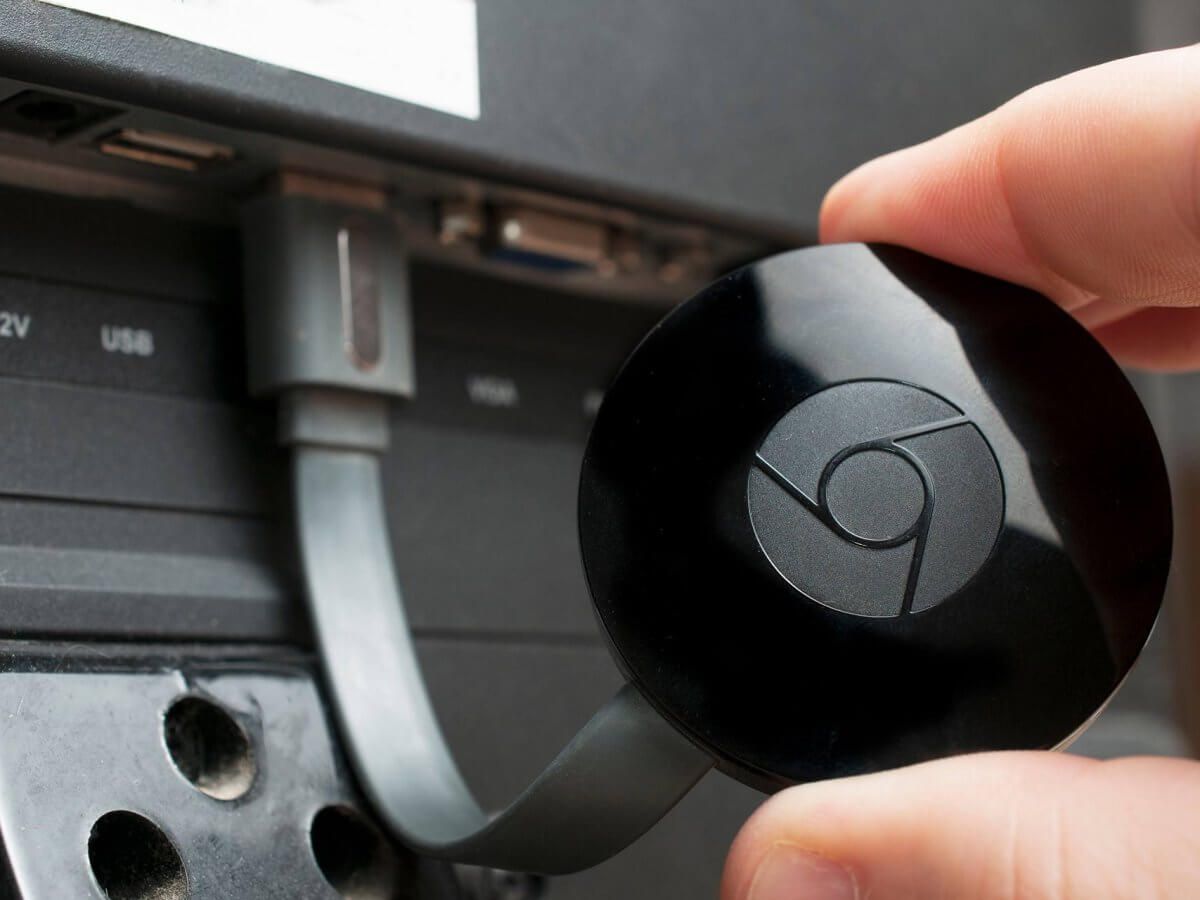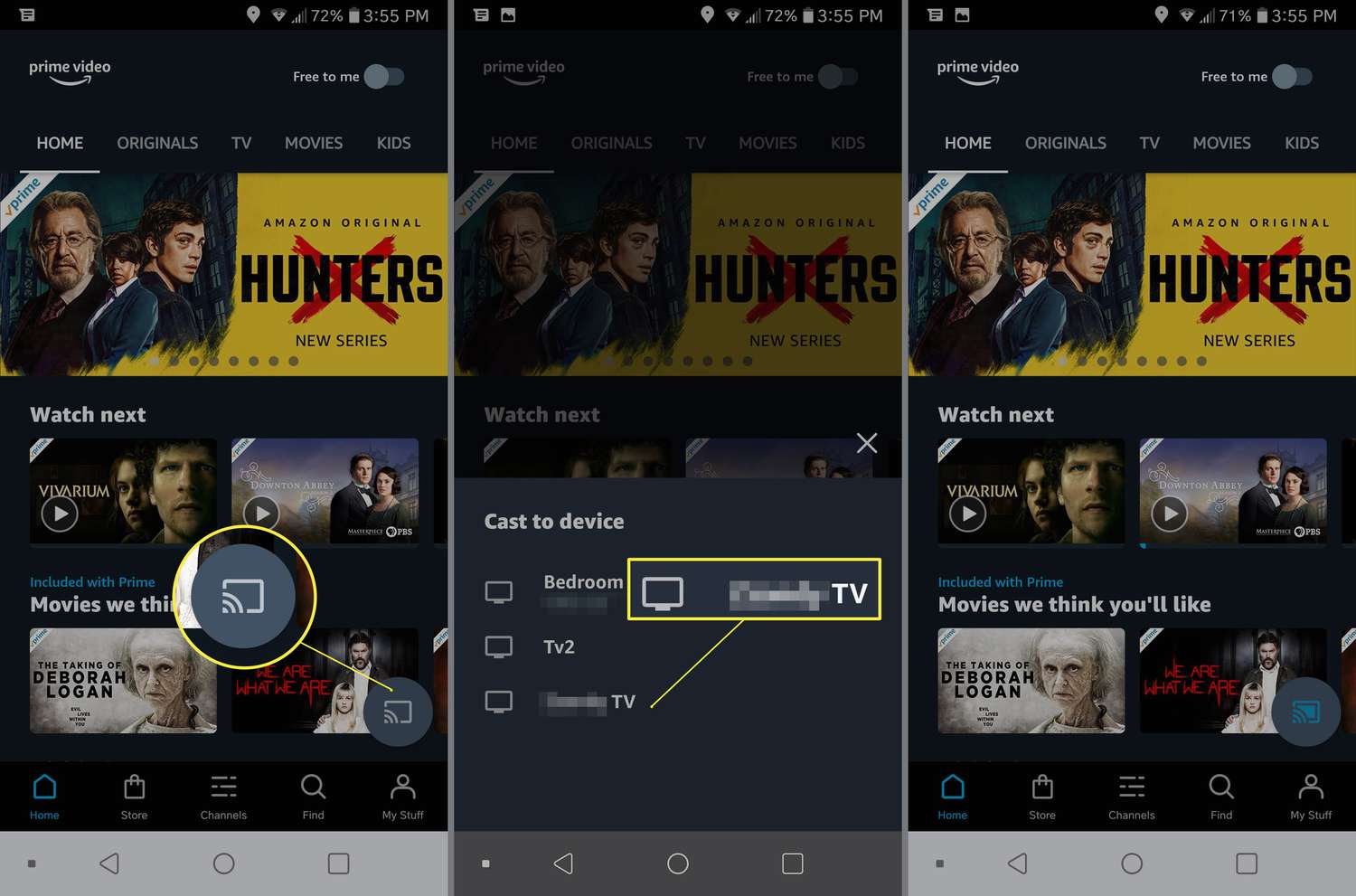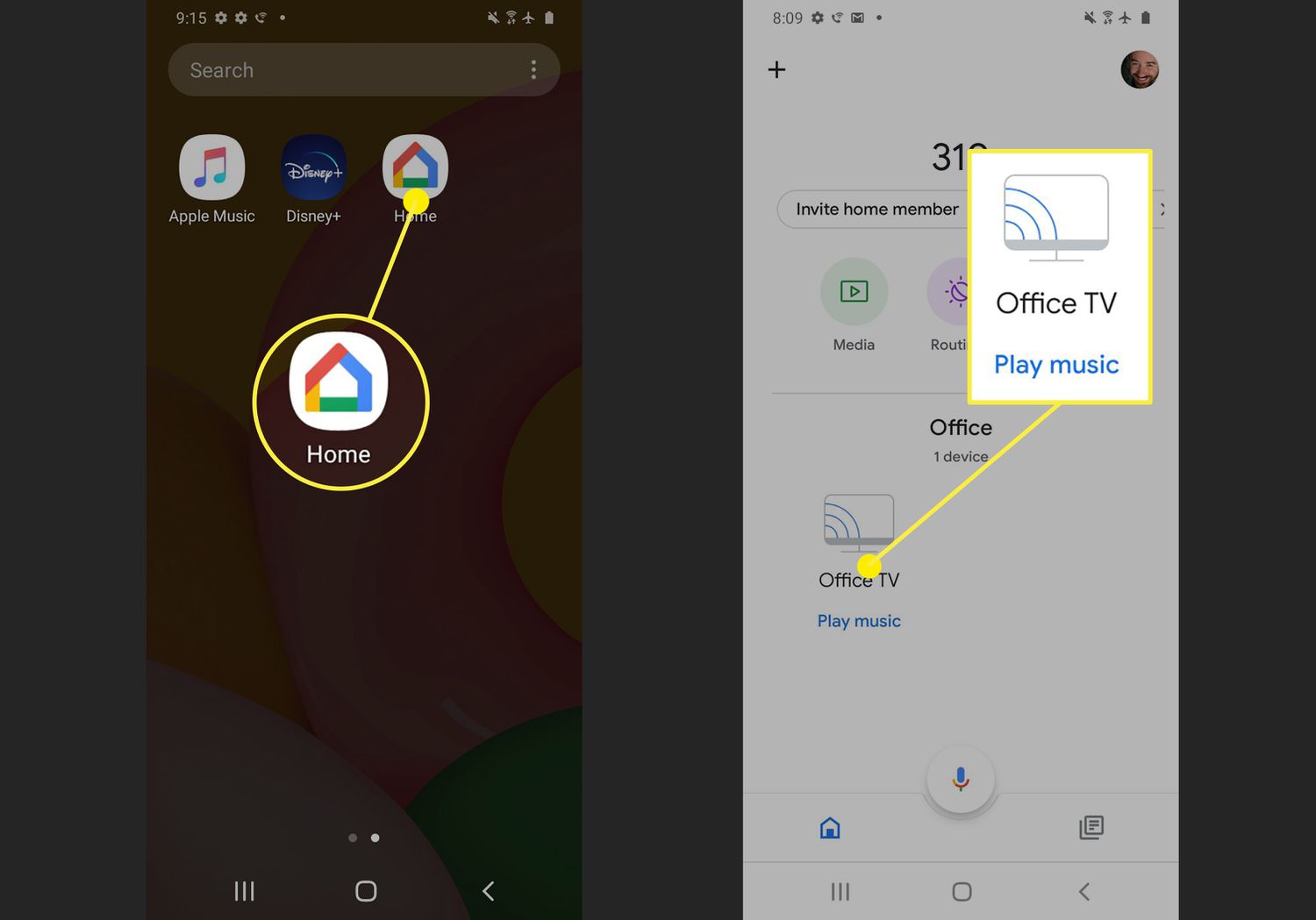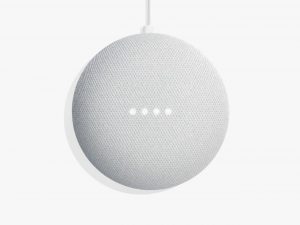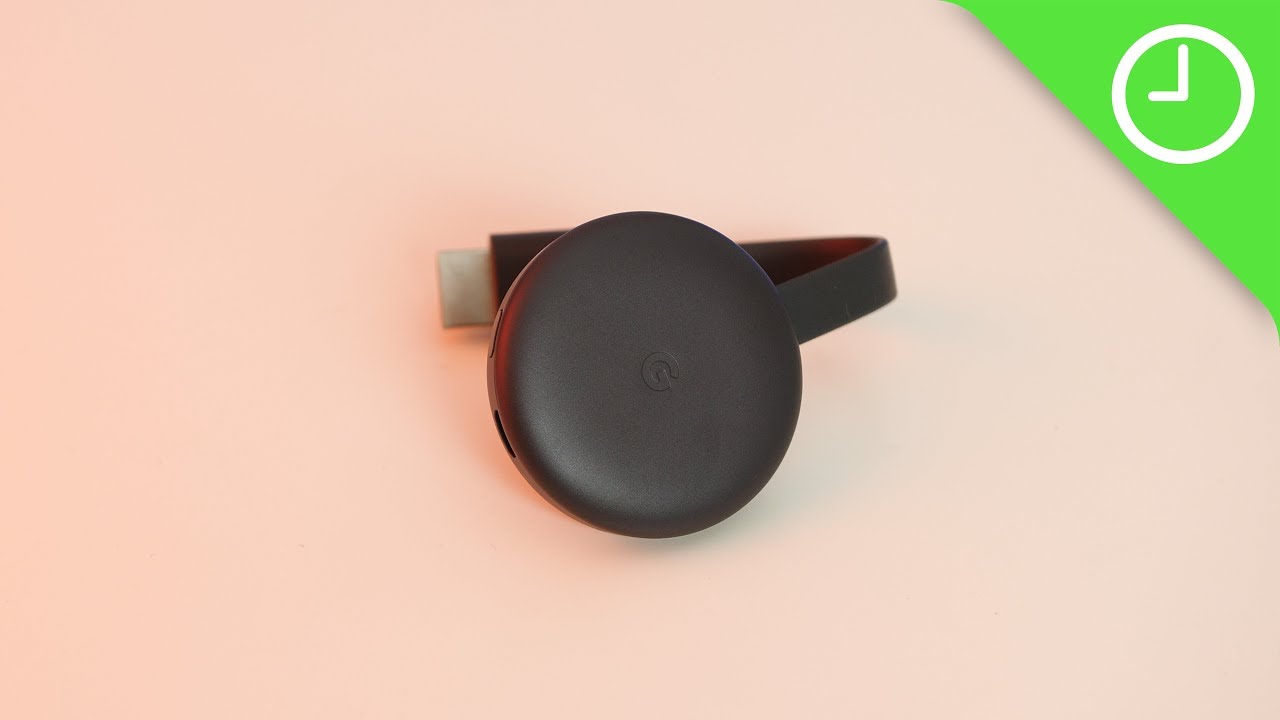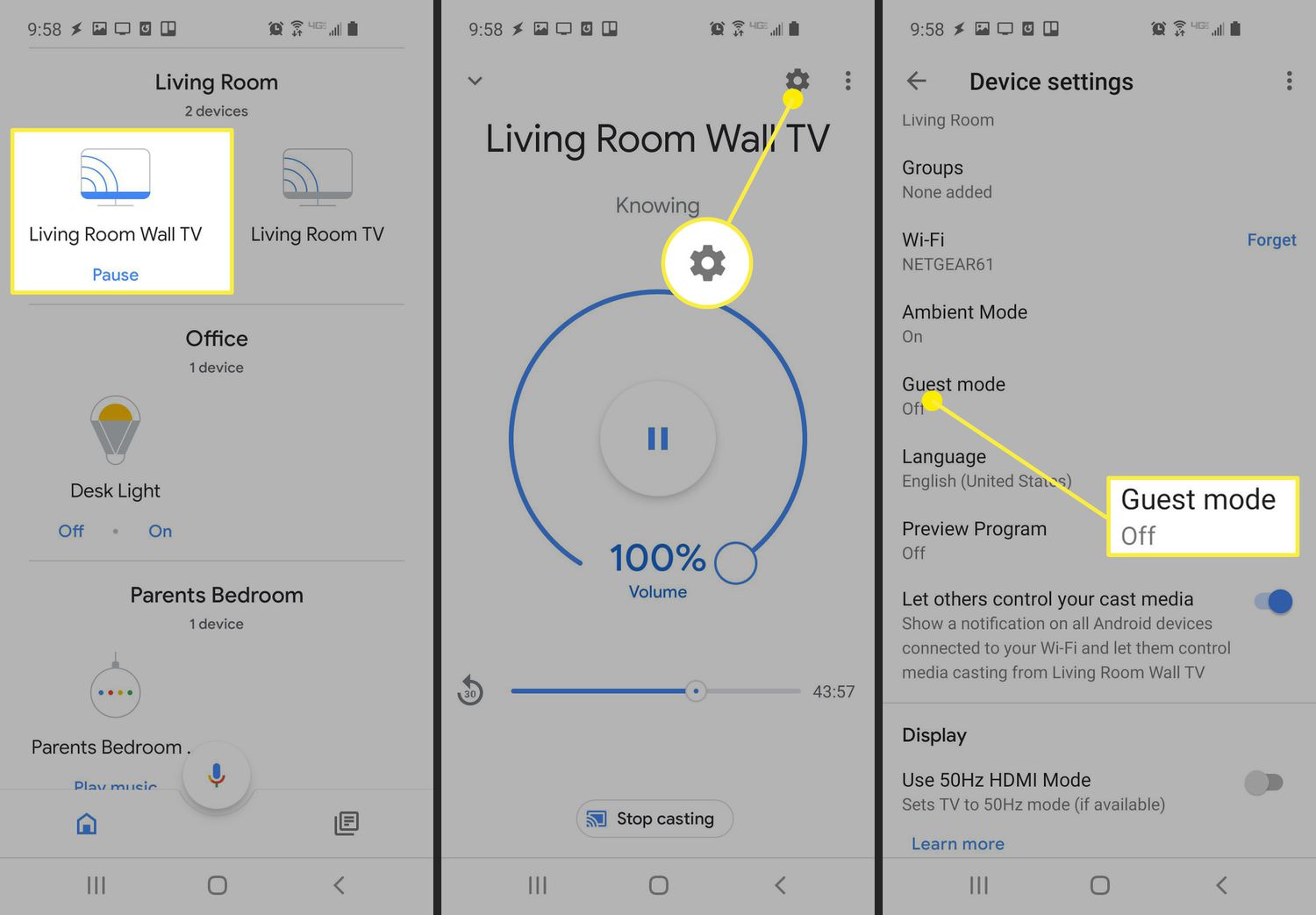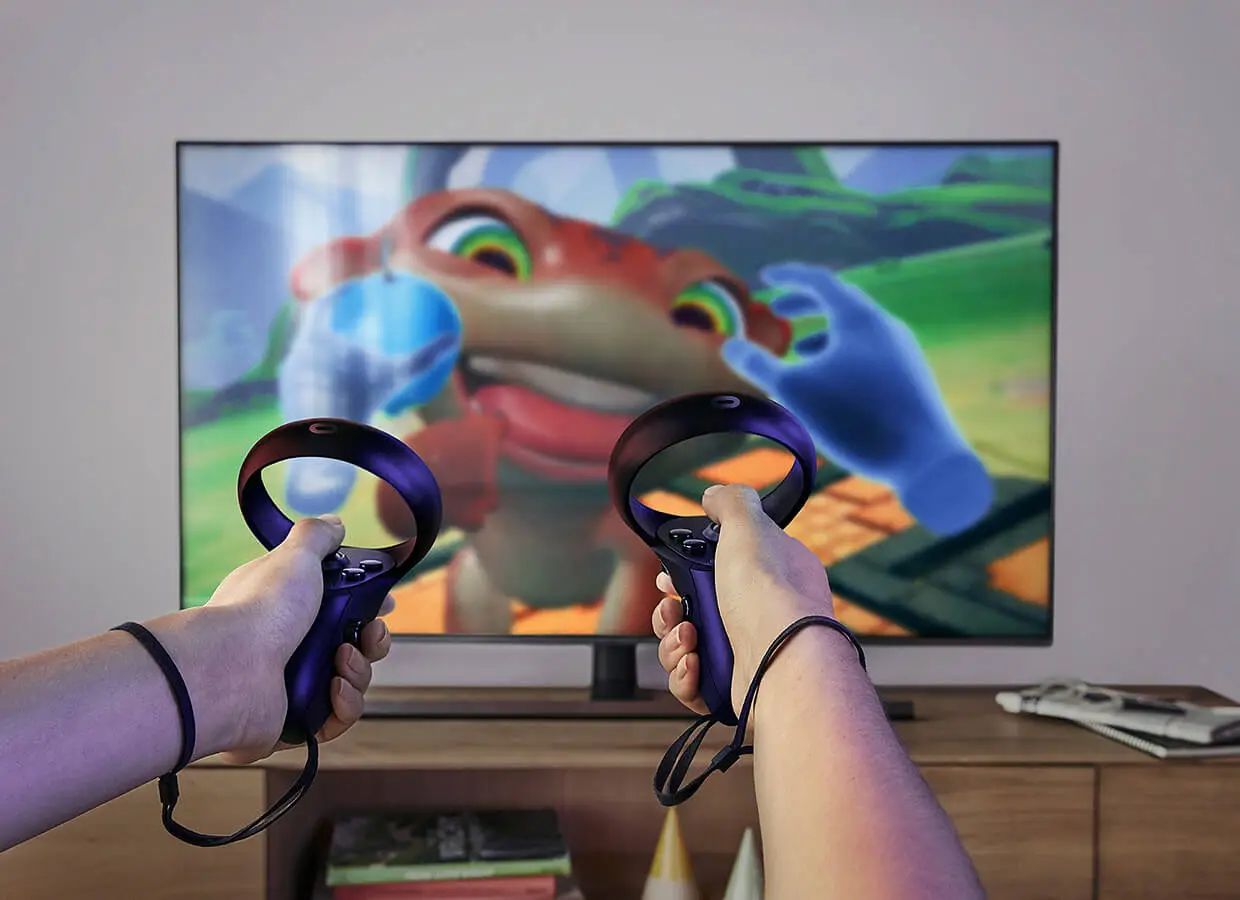Introduction
Chromecast is a popular streaming device that allows you to easily cast media from your smartphone, tablet, or computer to your television. It provides a seamless experience for enjoying your favorite movies, TV shows, music, and more on the big screen.
However, like any technology, Chromecast can encounter connectivity issues that may prevent it from connecting to your Wi-Fi network. If you’re facing difficulties connecting your Chromecast, don’t worry, you’re not alone. In this article, we’ll explore some common issues that can cause Chromecast connection problems and provide troubleshooting steps to help you resolve them.
Before we dive into the troubleshooting, it’s important to understand that there can be several factors contributing to Chromecast connectivity issues. It could be related to your Wi-Fi signal strength, router settings, router compatibility, or even specific issues with the Chromecast app. By identifying the root cause of the problem, you can take appropriate steps to fix it.
In the following sections, we’ll discuss some of the most common issues that can cause Chromecast connection problems and provide solutions to help you get your Chromecast connected and streaming again.
Common Issues with Chromecast
While the Chromecast is a popular streaming device, it can sometimes face connectivity issues that prevent it from working properly. Here are some common issues that users may encounter:
- Wi-Fi Connection Problems: One of the most common issues with Chromecast is difficulties in establishing a reliable Wi-Fi connection. This can result in buffering, stuttering, or even a complete inability to connect.
- Incorrect Wi-Fi Network: Chromecast may sometimes connect to the wrong Wi-Fi network, especially if you have multiple networks available. This can cause confusion and prevent the device from functioning as intended.
- Wi-Fi Signal Strength: Weak Wi-Fi signals can lead to unstable connections between the Chromecast device and your router. This can result in intermittent buffering or loss of connection altogether.
- Router Settings: Certain router settings may conflict with the operation of Chromecast. For example, firewalls or strict security settings can prevent the device from connecting properly.
- Router Compatibility: Chromecast may not be compatible with all routers. Older or outdated routers may lack the necessary features or protocols to establish a stable connection.
These are just a few examples of the common issues that can affect Chromecast connectivity. Keep in mind that each situation may be different, and it’s essential to troubleshoot and identify the specific issue you’re facing.
In the following sections, we’ll delve into specific troubleshooting steps to help resolve these common Chromecast issues and get your streaming experience back on track.
Wi-Fi Connection Problems
When it comes to Chromecast connectivity issues, Wi-Fi problems are often at the heart of the matter. Here are some common Wi-Fi connection problems you may encounter:
1. Weak Wi-Fi Signal: If your Wi-Fi signal is weak in the area where your Chromecast is located, it can result in a poor connection or frequent interruptions. Try moving your router closer to the Chromecast or consider using a Wi-Fi range extender to boost the signal strength.
2. Interference: Other devices or appliances in your home, such as cordless phones, microwave ovens, or baby monitors, can interfere with your Wi-Fi signal and impact the performance of your Chromecast. Keep your Chromecast away from such devices or consider switching to a different Wi-Fi channel that has less interference.
3. Network Congestion: If your Wi-Fi network is shared with several devices that are simultaneously streaming or downloading large files, it can cause congestion and affect the performance of your Chromecast. Try reducing the number of active devices on your network or prioritize the bandwidth for the Chromecast.
4. Router Placement: The physical location of your router can also impact the performance of your Chromecast. Avoid placing it near walls, metal objects, or other obstructions that can weaken the Wi-Fi signal. Ideally, position the router in a central location to ensure optimal coverage throughout your home.
5. Incorrect Wi-Fi Network: It is possible that your Chromecast might be connecting to a different Wi-Fi network than the one you intend to use. Check the Wi-Fi settings on your Chromecast and ensure that it is connected to the correct network. Additionally, double-check the network password to ensure it is entered correctly.
If you’re experiencing Wi-Fi connection problems with your Chromecast, the solutions mentioned above can help you troubleshoot and resolve the issue. By addressing these Wi-Fi-related problems, you can improve the stability and reliability of your Chromecast’s connection.
Incorrect Wi-Fi Network
One frustrating issue that Chromecast users may encounter is when the device connects to the wrong Wi-Fi network. This can prevent the Chromecast from functioning as intended. Here are some possible reasons and solutions for this problem:
1. Multiple Wi-Fi Networks: If you have multiple Wi-Fi networks at home, such as separate networks for 2.4GHz and 5GHz bands, it’s possible that your Chromecast is connecting to the wrong one. Make sure to select the correct Wi-Fi network during the initial setup process and verify that the Chromecast is connected to the intended network.
2. Network Name (SSID) Confusion: If your Wi-Fi network name (SSID) is similar to other networks in your area, the Chromecast may mistakenly connect to a neighboring network with a similar name. To avoid this, consider renaming your Wi-Fi network with a unique and easily recognizable name.
3. Forgotten Network Credentials: If you’ve changed your Wi-Fi network password or if you recently replaced your router, your Chromecast may still be trying to connect using the old credentials. To resolve this, go to the Google Home app or Chromecast settings and select the correct Wi-Fi network, entering the updated credentials if necessary.
4. Network Resets: Occasionally, performing a network reset can help resolve the issue. This involves resetting both your router and your Chromecast. Make sure to follow the proper steps to perform a network reset, and then set up your Chromecast from scratch, ensuring that it connects to the correct Wi-Fi network this time.
If you’re experiencing problems related to the Chromecast connecting to the wrong Wi-Fi network, try the solutions mentioned above. By ensuring that the Chromecast is connected to the correct network, you can eliminate this issue and enjoy uninterrupted streaming on your device.
Wi-Fi Signal Strength
Another common issue that can affect Chromecast connectivity is a weak Wi-Fi signal. When the Wi-Fi signal strength is low, it can result in a slow or unstable connection between your Chromecast and the router. Here are some factors to consider and solutions to improve the Wi-Fi signal strength:
1. Router Placement: The physical location of your router plays a significant role in Wi-Fi signal strength. Ensure that your router is placed in a central location in your home, away from obstructions such as walls or large appliances that can interfere with the signal. Optimizing the router’s placement can help evenly distribute the Wi-Fi signal throughout your space.
2. Use Wi-Fi Range Extenders or Mesh Systems: If your Wi-Fi signal struggles to reach certain areas of your home, consider using Wi-Fi range extenders or mesh Wi-Fi systems. These devices can help amplify and extend the Wi-Fi signal to eliminate dead zones and ensure better coverage throughout your entire home.
3. Reduce Interference: Interference from other electronic devices can weaken the Wi-Fi signal. Keep your Chromecast away from devices such as cordless phones, microwaves, and baby monitors that operate on similar frequencies. Additionally, switch your router to a less crowded Wi-Fi channel to minimize interference from neighboring networks.
4. Upgrade Your Router: If you’ve had your router for a long time, it may not be equipped to handle the demands of multiple devices and high-bandwidth streaming. Consider upgrading to a newer router model that supports the latest Wi-Fi standards and offers better signal strength and range.
5. Power Cycle Your Router: Sometimes a simple power cycle can help improve Wi-Fi signal strength. Unplug your router from the power source, wait for a few seconds, and then plug it back in. This can help reset the Wi-Fi signal strength and resolve any temporary issues that may be affecting the connection.
By addressing the Wi-Fi signal strength, you can enhance the performance of your Chromecast. Utilize the tips mentioned above to ensure a strong and stable Wi-Fi connection, leading to a smooth streaming experience on your Chromecast-enabled devices.
Router Settings
Router settings can sometimes cause issues with Chromecast connectivity. Incorrect or conflicting settings can prevent the Chromecast from establishing a proper connection with your Wi-Fi network. Here are some router settings to check and adjust if necessary:
1. Firewall Settings: Firewalls are designed to protect your network, but they can sometimes block certain connections needed for Chromecast to function correctly. Temporarily disabling the firewall or creating an exception rule for the Chromecast device in your router settings may resolve the issue. However, always exercise caution when adjusting security settings and ensure that your network remains secure.
2. MAC Filtering: MAC filtering is a security feature that allows or denies connections based on the device’s MAC address. If MAC filtering is enabled on your router, make sure that the MAC address of your Chromecast is added to the allowed devices list. This will ensure that the Chromecast is not blocked from connecting to the network.
3. Quality of Service (QoS) Settings: QoS settings prioritize bandwidth for specific devices or applications. If your router has QoS settings, consider giving priority to the Chromecast device. This will ensure that it receives the necessary network resources for smooth streaming and prevent other devices or activities from interfering with the Chromecast connection.
4. DNS Settings: DNS (Domain Name System) settings can sometimes cause issues with internet connectivity. Try changing the DNS settings on your router to use a public DNS server like Google DNS (8.8.8.8 and 8.8.4.4). This can help resolve any DNS-related issues that may be affecting the Chromecast’s ability to connect to the internet.
5. UPnP Settings: Universal Plug and Play (UPnP) allows devices to automatically discover and connect with each other on a network. Ensure that UPnP is enabled in your router settings, as this can help the Chromecast establish a proper connection with other devices and services on your network.
Keep in mind that router settings may vary depending on the manufacturer and model. Refer to your router’s user manual or contact your internet service provider for specific instructions on adjusting these settings. By reviewing and adjusting your router settings, you can potentially resolve any issues that are preventing your Chromecast from connecting to your Wi-Fi network.
Router Compatibility
In some cases, router compatibility issues can hinder the proper functioning of Chromecast. Older or outdated routers may lack the necessary features or protocols to establish a stable connection with Chromecast. Here are some factors to consider and potential solutions:
1. Wi-Fi Standards: Chromecast requires a Wi-Fi router that supports at least the 802.11n standard. While newer routers typically support this standard, older routers may only support previous versions like 802.11g or 802.11b. Upgrading to a router with better Wi-Fi standards can improve compatibility with Chromecast.
2. Dual-Band Routers: Chromecast supports both 2.4GHz and 5GHz Wi-Fi networks. However, older routers may only support 2.4GHz, which can be more crowded and subject to interference. Consider upgrading to a dual-band router that supports both frequencies for better performance and compatibility with Chromecast.
3. Router Firmware Updates: Outdated firmware can lead to compatibility issues. Check your router manufacturer’s website for any available firmware updates. Updating the router firmware can introduce new compatibility features that help resolve connectivity problems with Chromecast.
4. Router Limitations: Some routers have limitations on the number of devices that can be connected simultaneously. If you have many devices connected to your network, it could strain your router’s capabilities and cause issues with your Chromecast. In such cases, consider upgrading to a router with higher device capacity.
5. Network Protocols: Chromecast relies on certain network protocols to establish connections. Older routers may not support these protocols or may have limited compatibility. Check the specifications of your router to ensure it supports the necessary protocols for Chromecast operation.
If you suspect router compatibility issues, consider upgrading to a newer router that is known to be compatible with Chromecast. This can help ensure a smoother and more stable connection between your Chromecast and Wi-Fi network.
Remember that router compatibility is just one of the potential factors that can affect Chromecast connectivity. By addressing compatibility issues, you increase the chances of having a seamless streaming experience with your Chromecast device.
Chromecast App Issues
While Chromecast offers a user-friendly streaming experience, the accompanying Chromecast app can encounter issues that affect its functionality. Here are some common app-related problems and their potential solutions:
1. Outdated App: Make sure that you have the latest version of the Chromecast app installed on your smartphone or tablet. App updates often include bug fixes and improvements that can resolve compatibility issues with your Chromecast device.
2. App Permissions: Check the app permissions on your device to ensure that the Chromecast app has permission to access necessary features like Wi-Fi and Bluetooth. Without these permissions, the app may not be able to establish a connection with your Chromecast.
3. Clear App Cache and Data: In some cases, clearing the cache and data of the Chromecast app can help resolve any temporary issues or conflicts that may be affecting its performance. Go to your device’s settings, navigate to the app settings, and clear the cache and data for the Chromecast app.
4. Reinstall the App: If clearing the app cache and data doesn’t resolve the issue, consider uninstalling and reinstalling the Chromecast app. This can help ensure a fresh installation and potentially fix any app-related problems that may be preventing proper connectivity with your Chromecast.
5. App Compatibility: While the Chromecast app is available for both iOS and Android devices, there may be certain compatibility limitations based on the device’s software version or hardware requirements. Ensure that your device meets the minimum requirements for running the Chromecast app.
6. App-Specific Settings: The Chromecast app may have specific settings or options that could impact its functionality. Explore the app settings to ensure that all relevant options are properly configured. For example, check if the app is set to automatically detect and connect to your Chromecast device.
If you’re experiencing issues with the Chromecast app, these troubleshooting steps can help you address potential app-related problems. By solving any app-related issues, you can maximize the functionality of your Chromecast streaming device.
Router Firmware Updates
Router firmware plays a crucial role in the proper functioning of your router, including its compatibility with Chromecast. Outdated firmware can cause connectivity and performance issues. Here’s what you need to know about router firmware updates:
1. Check for Firmware Updates: Visit the website of your router manufacturer or log into your router’s settings page to check if there are any firmware updates available. Often, manufacturers release firmware updates to address compatibility issues, improve performance, and fix bugs that may affect the connectivity of devices like Chromecast.
2. Read Release Notes: Before updating your router’s firmware, review the release notes or documentation provided by the manufacturer. This will give you insights into the specific improvements and fixes introduced in the update. Pay attention to any mentions of Chromecast or related connectivity issues.
3. Backup Router Settings: Before proceeding with a firmware update, it’s always a good practice to back up your router’s current settings. This can be helpful in case something goes wrong during the update process, allowing you to restore your settings and configurations easily.
4. Follow Update Instructions: Each router manufacturer may have different procedures for updating firmware. Follow the instructions provided by the manufacturer to ensure a successful update. This may involve downloading the firmware file, accessing the router’s admin interface, and initiating the update process. Be patient and avoid interruptions during the update.
5. Reboot Your Router: Once the firmware update is complete, it’s a good idea to reboot your router to ensure that the new firmware is fully applied. This can help resolve any lingering issues and optimize the router’s performance, potentially improving compatibility with Chromecast.
6. Regularly Check for Updates: Firmware updates are not a one-time affair. Routinely check for new firmware releases and keep your router up to date. This will ensure that you have the latest compatibility enhancements and bug fixes, providing a better overall experience for your Chromecast and other connected devices.
By updating your router’s firmware, you can ensure that it remains compatible with Chromecast and provides optimal performance. This step is essential in maintaining a reliable and seamless connection between your Chromecast and the Wi-Fi network.
Chromecast Software Updates
Regular software updates are essential for keeping your Chromecast device running smoothly and ensuring compatibility with the latest features and technologies. Here’s what you need to know about Chromecast software updates:
1. Automatic Updates: By default, Chromecast devices are set to automatically download and install software updates when connected to the internet. These updates are pushed by Google and aim to enhance performance, fix bugs, improve compatibility, and introduce new features.
2. Check for Updates: If you want to manually check for software updates on your Chromecast device, open the Google Home app on your mobile device or computer. Navigate to the device settings and look for the firmware version. If an update is available, follow the prompts to initiate the update process.
3. Leave Chromecast Powered On: To ensure that your Chromecast receives software updates, it’s important to leave it powered on and connected to the internet whenever possible. Updates are usually downloaded and installed in the background, so avoiding frequent power cycles or disconnections will help ensure a smooth update process.
4. Stable Internet Connection: Having a stable and reliable internet connection is crucial for successful software updates. Ensure that your Wi-Fi network is working properly and that there are no issues with your internet service provider that may impact the update process. A strong and consistent internet connection will help facilitate the software update for your Chromecast device.
5. Reboot if Needed: In some cases, software updates may not automatically install, or there may be issues with the update process. If you suspect a problem, try rebooting your Chromecast device by unplugging it from the power source, waiting a few seconds, and plugging it back in. This can help resolve any temporary glitches and initiate the update process.
6. Be Patient: Software updates may take some time to download and install, depending on the size of the update and your internet connection speed. During the update process, avoid interrupting or disconnecting your Chromecast device. Be patient and allow it to complete the update before using it again.
By keeping your Chromecast software up to date, you ensure that your device remains compatible with the latest technologies and provides the best streaming experience. Regular software updates help address bugs, improve performance, and introduce new features, making your Chromecast even more enjoyable to use.
Troubleshooting Steps
If you’re experiencing difficulties with your Chromecast connection, there are several troubleshooting steps you can take to identify and resolve the issue. Follow these steps to troubleshoot common Chromecast connectivity problems:
1. Restart Your Chromecast: Begin by restarting your Chromecast device. Unplug it from the power source, wait for a few seconds, and then plug it back in. This can help clear any temporary glitches and establish a fresh connection.
2. Restart Your Router: Restarting your router can also help resolve connectivity issues. Unplug the router from the power source, wait for a minute or two, and then plug it back in. Allow the router to fully reboot before attempting to connect your Chromecast again.
3. Check Wi-Fi Network: Ensure that your Wi-Fi network is functioning properly. Check if other devices can connect to the network and access the internet. If not, troubleshoot and fix any issues with your Wi-Fi network before troubleshooting the Chromecast connection.
4. Verify Wi-Fi Network Settings: Double-check the Wi-Fi network name (SSID) and password to ensure that you are connecting to the correct network. Verify that the Chromecast is connected to the appropriate Wi-Fi network to establish a successful connection.
5. Move Closer to the Router: If the Wi-Fi signal strength is weak, try moving your Chromecast closer to the router. This can help improve the signal quality and establish a more stable connection.
6. Factory Reset Chromecast: If all else fails, you can try performing a factory reset on your Chromecast device. Keep in mind that this will erase all settings and data on the Chromecast, returning it to its original state. Refer to the manufacturer’s instructions on how to perform a factory reset.
7. Contact Chromecast Support: If you’ve tried all the troubleshooting steps and are still experiencing issues with your Chromecast, reach out to Chromecast support for further assistance. They can provide specific guidance and troubleshooting tailored to your situation.
Remember, each troubleshooting step is an opportunity to identify and resolve the problem. Be patient and methodical in your approach, and don’t hesitate to seek professional support if needed. By following these troubleshooting steps, you can get your Chromecast back up and running smoothly.
Conclusion
Chromecast is a versatile streaming device that brings entertainment to your living room. However, connectivity issues can sometimes arise, preventing you from enjoying your favorite content. In this article, we explored some common problems that can affect Chromecast connectivity, along with troubleshooting steps to help you resolve them.
We discussed Wi-Fi connection problems and provided solutions to address weak Wi-Fi signals, interference, network congestion, and incorrect Wi-Fi network selection. Additionally, we examined router-related issues such as settings, compatibility, firmware updates, and the importance of keeping router firmware up to date. We also covered Chromecast app issues and the significance of ensuring the latest software updates for both Chromecast and your router.
Furthermore, we provided troubleshooting steps to help you identify and resolve Chromecast connectivity problems. From restarting your Chromecast and router to verifying Wi-Fi network settings and performing a factory reset, these steps can help you pinpoint and overcome performance issues.
Remember, troubleshooting connectivity issues requires patience and a systematic approach. It’s essential to eliminate potential causes and address each problem area one by one. If all else fails, don’t hesitate to contact Chromecast support for personalized assistance.
By following the troubleshooting steps outlined in this article, you can enhance the performance and reliability of your Chromecast device. Enjoy the seamless streaming experience and make the most out of your entertainment possibilities with Chromecast!







